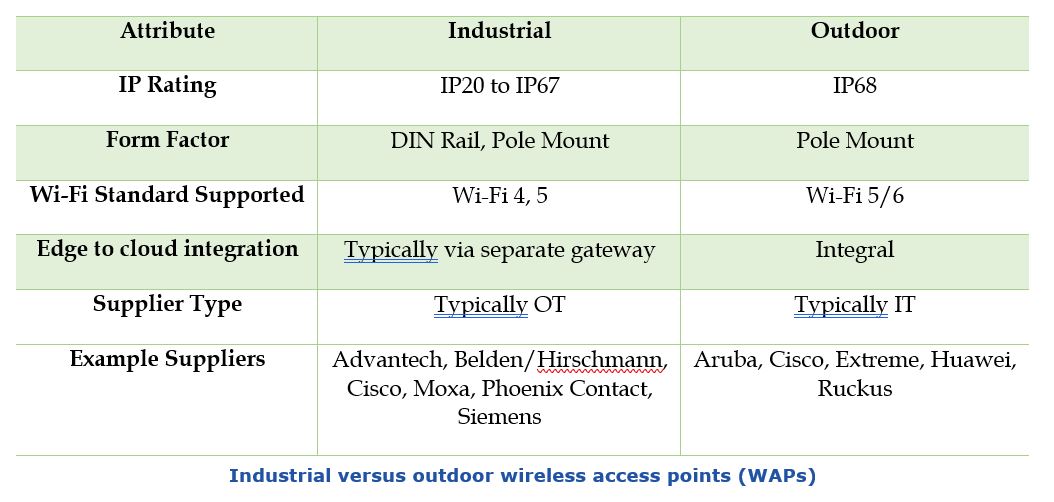

Wireless communications play an increasing role in connectivity-driven digital transformation architectures. Customers and solution providers look to wireless to meet escalating requirements for connecting mobile, remote, and rotating assets, as well as inaccessible data from a growing number of connected sensors and devices. Industrial and outdoor wireless access points (WAPs) are both increasingly incorporated in IT and enterprise network architectures designed to enable digital transformation.
Strategic emphasis on industrial and outdoor WAPs, where both IT and OT suppliers compete, reflects ongoing IT/OT convergence as well as divergent strategies at the industrial IoT edge. Use and application of wireless technology is always driven by the requirements of the installation, but IT suppliers are also bringing their wireless solutions under the umbrella of their pervasive network infrastructure management, edge-to-cloud integration, AI, and edge computing strategies. This brings wireless infrastructure into the overall network management architecture, making it easier to incorporate into IoT solutions. IT suppliers are also much more likely to support the latest Wi-Fi standards and bring the latest IoT-driven innovations to their wireless offerings.

Offerings from OT-oriented suppliers tend to be more solution-specific due to the primary requirement for reliable transmission and ability to provide connectivity and roaming capabilities in difficult environments. In this role, WAPs are used to serve typically mobile, remote, rotating, or other applications where wireline installations are difficult or impossible. With some notable exceptions, such as Siemens, industrial wireless products from traditional OT suppliers therefore tend to function as adjuncts to primary wireline offerings. This approach leads to an emphasis on other device types, such as cellular or Ethernet gateways and routers, for incorporation of industrial IoT functionality.
The value proposition for wireless technology continues to increase due to ongoing technical improvements. While most IT-oriented outdoor wireless suppliers offer Wi-Fi 5 devices and are adding Wi-Fi 6 compatibility, most industrial suppliers held off on Wi-Fi 5 due to the emphasis on reliability vs. speed in their applications. Cisco’s industrial line and the Belden/Hirschmann and Siemens offerings are exceptions to this, with all recently introducing Wi-Fi 5 devices. ARC expects IT suppliers and their IT and enterprise customers to continue to lead adoption of emerging wireless technologies, such as Wi-Fi 6 and 5G.
Material for this blog was taken from ARC Advisory Group’s just-released report, Industrial and Outdoor Wireless Access Points. Further information on this report can be found at: https://www.arcweb.com/market-studies/industrial-outdoor-wireless-access-points

